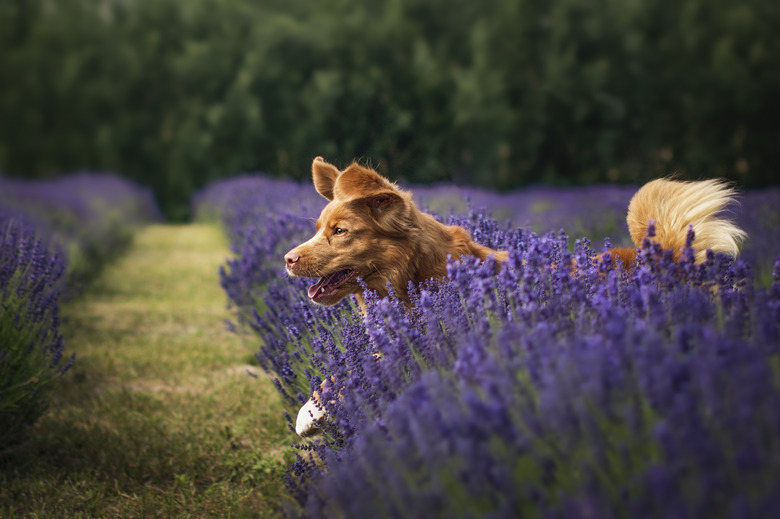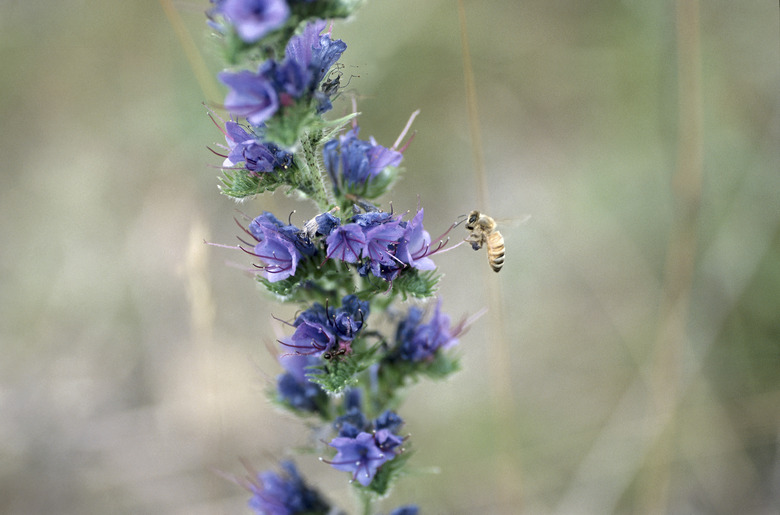Is Lavender Toxic To Dogs? Here's What You Need To Know About If Lavender Is Safe Or Toxic To Dogs
Is lavender poisonous to dogs? Some experts say yes, while others say no. Many products for dogs contain lavender because of its unusual, slightly citrus taste that dogs seem to like. Others recommend lavender for dogs' anxiety, saying the scent has a calming effect. The full answer depends on how the lavender is used, the definition of poisonous, how much lavender the dog eats and the individual dog.
Know what the experts say
Know what the experts say
Lavender is on the ASPCA's list of plants that are toxic to dogs. That's because lavender contains linalool and linalyl acetate, both of which can be toxic at high levels. Typical signs of lavender toxicity in dogs are nausea and vomiting. Of course, dogs can't tell you they feel nauseous, so look for signs such as listlessness or a distended abdomen from the amount of plant material they ate.
On the other hand, Colorado Gardening, a company that designs dog-friendly yards, advises using lavender in landscapes because its rough texture discourages dogs from eating much of it. And if dogs don't eat much of the lavender, presumably it is less likely to be toxic to them.
Understand how oils are different
Understand how oils are different
Some veterinarians, who prefer to try holistic or natural treatments over medication, advise their clients to use lavender oil for dogs' anxiety or at nighttime to help them sleep. Many dog owners have taken this advice and found it worked for their dogs with no signs of toxicity. However, the American Kennel Club (AKC) cautions that natural substances should not be assumed to always be safe.
Essential oils are highly concentrated, so one of the considerations is how much oil is used and how it is used. If you've ever used essential oils for yourself or someone in your family, you know that you only need a few drops for any application. Yet, lavender essential oil is often used in diffusers that run while people sleep, including in babies' rooms. The AKC points out, however, that dogs have a much more powerful sense of smell than humans, and there is not much scientific study on the subject for guidance.
We do know that essential oils are absorbed rapidly by dogs, whether they're given orally, applied to the skin or used as a scent. Lavender and other oils are quickly metabolized by the liver; therefore, oils shouldn't be used for dogs with liver issues. It also probably isn't wise to use lavender oil on puppies, whose systems are still new and adjusting, or on older dogs whose systems may not be able to handle what they once could.
Help your dog explore new environments
Help your dog explore new environments
Whether you've moved into a new environment, are visiting friends or roaming in a park, go with your dog to explore what the new territory holds. Notice what plants are there and try to identify ones you don't know. Scents are most apt to get a dog's attention, so determine if strong-smelling plants are beckoning. There are cell phone apps that identify plants by the photo you can snap right there. And everywhere there is a flower, there could be a bee sting waiting to happen. Another potential hazard to look for is areas where pesticides have been applied. The signs that are placed in the turf when pesticides have recently been used are a good indication. Any plants or grasses with weed-killing materials on them can cause a dog to become very ill if they snack on them.
Get your vet's opinion
Get your vet's opinion
If you want to try using lavender or lavender oil with your dog, talk with your veterinarian first. Some will advise against it all together and tell you why. Those who are familiar with using oils, though, can advise you on how to use it safely, including how much to use, how to apply it and what to watch for as signs of toxicity. Your dog might be allergic to a substance that doesn't bother other dogs. An allergic reaction, while not poisonous to them, can still cause very uncomfortable reactions.
Remember that every dog is different. For example, lavender oil is sometimes prescribed for skin conditions, but it can irritate some dogs' skin instead. So if you decide to try lavender or lavender oil, go gently at first. Try just one drop on the dog's collar or pillow instead of the skin. Also, try not to put the oil where the dog could lick it, thereby ingesting it instead of smelling it.
Always check with your veterinarian before changing your pet's diet, medication, or physical activity routines. This information is not a substitute for a vet's opinion.


